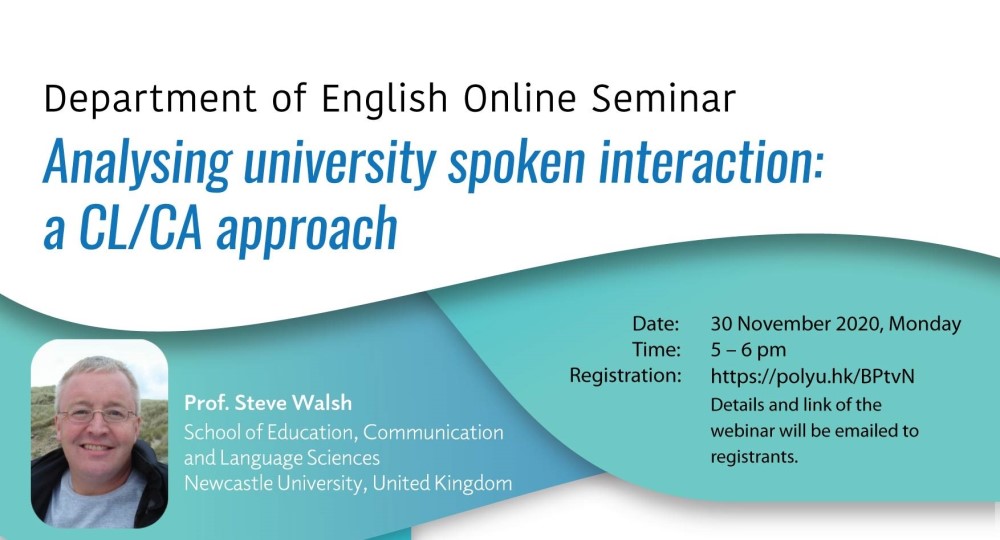Analysing university spoken interaction: a CL/CA approach

-
Date
30 Nov 2020
-
Organiser
Department of English
-
Time
17:00 - 18:00
-
Venue
Live webinar
Remarks
The talk will be conducted in English.
Summary
About the Speaker
Steve Walsh is Professor of Applied Linguistics and Communication in the School of Education, Communication and Language Sciences, Newcastle University, UK, where he was, until recently, Head of Department. He has been involved in English Language Teaching and English language teacher education for more than 30 years in a range of overseas contexts, including Spain, Hungary, Poland, China, Ireland, England and Hong Kong. Steve’s research interests include classroom discourse, teacher development, second language teacher education, and professional communication. He has published 10 books and more than 100 research papers. His most recent publications, with Steve Mann, are the monograph Reflective Practice for English Language Teaching: Research-based Principles and Practices (Routledge, 2017) and The Routledge Handbook of English Language Teacher Education (Routledge, June 2019).
Abstract
In this talk I consider how corpus linguistics (CL) and conversation analysis (CA) can be used together to provide ‘thick descriptions’ of spoken interaction in the context of small group teaching in higher education. From an analysis of the data, I show how the two approaches can be combined in an iterative process to account for features of spoken discourse at both micro (word) and macro (text) levels. Beginning with CL and focusing largely on words and combinations of words, CA is then used to highlight pertinent interactional features. This methodology follows an iterative process: from CL to CA, back to CL and so on. This approach to analysis provides powerful insights into the ways in which interactants establish understandings in educational settings and, in particular, highlights the inter-dependency of words, utterances and text in the co-construction of meaning. While CA and CL have both been used on their own to study spoken encounters, each has its limitations. CL, for example, largely ignores context and focuses on large scale analysis, whereas CA offers detailed descriptions but is unable to generalize to larger contexts. Using a combined CL and CA approach (henceforth, CLCA), I argue, cumulatively gives a more ‘up-close’ description of spoken interactions in an educational setting than that offered by using either one on its own.


